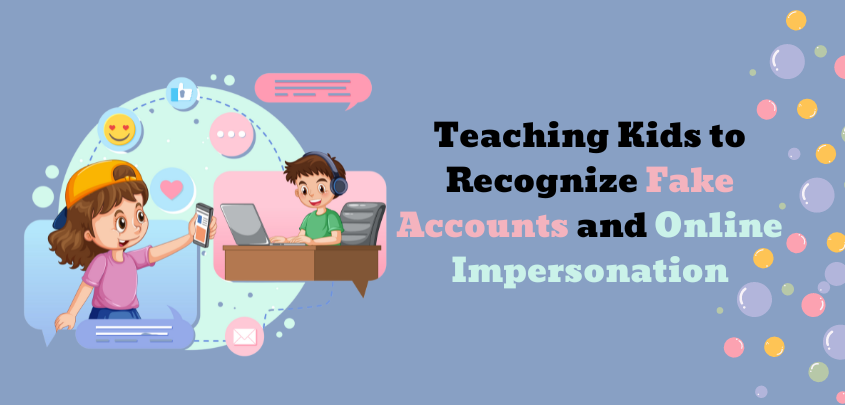
17, Jul, 2024
Teaching Kids to Recognize Fake Accounts and Online Impersonation
Children in the modern digital age are being raised in a world of social networking, online gaming, and instant messaging. These platforms provide a lot of chances for social contact and education, but they also carry some concerns, such as the possibility of running into fraudulent accounts and online impersonation. In order to protect children online and provide a positive digital environment, it is imperative that they are made aware of these hazards.
Understanding Fake Accounts and Online Impersonation
Fake accounts: are profiles created with false information to deceive others. These can be used for various malicious purposes, including scamming, spreading misinformation, or cyberbullying.
Online impersonation: Involves someone pretending to be another person, often to gain trust and manipulate the victim for their benefit. This can range from stealing personal information to damaging the real person’s reputation.
The Importance of Awareness
Awareness is the first step toward combating these problems. Children must learn that not everyone they meet online is who they seem to be. We can empower them to protect themselves and their friends by educating them how to spot false accounts and impersonators.
Important Methods for Identifying Fake Accounts
1. Examining the profile:
- Profile Pictures: Fake accounts frequently use generic stock photographs or celebrity photos. To find out if a photo is stolen, try using a reverse image search.
- Information consistency: Verify that the profile’s information, including the name, bio, and posts, are accurate and consistent.
- Activity Levels: Previous posts, comments, and interactions are usually present in authentic accounts. Be wary of newly opened accounts that show little to no activity.
2. Behavior Analysis:
- Too Good to Be True: Steer clear of accounts that give out gifts, cash, or opportunities that are too good to be true.
- Pressure and Urgency: Fake accounts frequently instill a sense of urgency, compelling users to act without pausing to consider their actions.
3. Verification:
- Mutual Friends: Verify whether the account has any connections or mutual friends. This frequently aids in confirming authenticity.
- Direct Communication: If you’re unsure, contact the person directly through another trustworthy channel to check their identification.
Teaching Kids About Online Impersonation
1. Personal Data:
- Protect Personal Data: Teach kids the value of keeping personal information private. This includes full names, residences, school information, and telephone numbers.
- Password Security: Instruct them to keep their passwords private and strong, using different ones for every account.
2. Identifying Attempts at Impersonation:
- Unusual Communications: Friends who send you messages that look strange should be avoided, especially if they seek for money or personal information.
- Verification Phone Calls: Encourage children to double-check strange communications by calling a friend or utilizing another form of communication.
3. Blocking and Reporting:
- Report Unauthentic Accounts: Teach children how to report questionable accounts to platform authorities.
- Block and Ignore: Urge them not to interact with and to block accounts that show questionable activity.
Conclusion
Modern parenting and education must include teaching children to spot phony accounts and online impersonation. We contribute to the creation of a safer online environment for kids to explore, study, and interact in by giving them the information and resources they need to recognize and respond to these risks. Instead of instilling fear, the intention is to help kids develop critical thinking and awareness skills that will be useful in the digital age.
